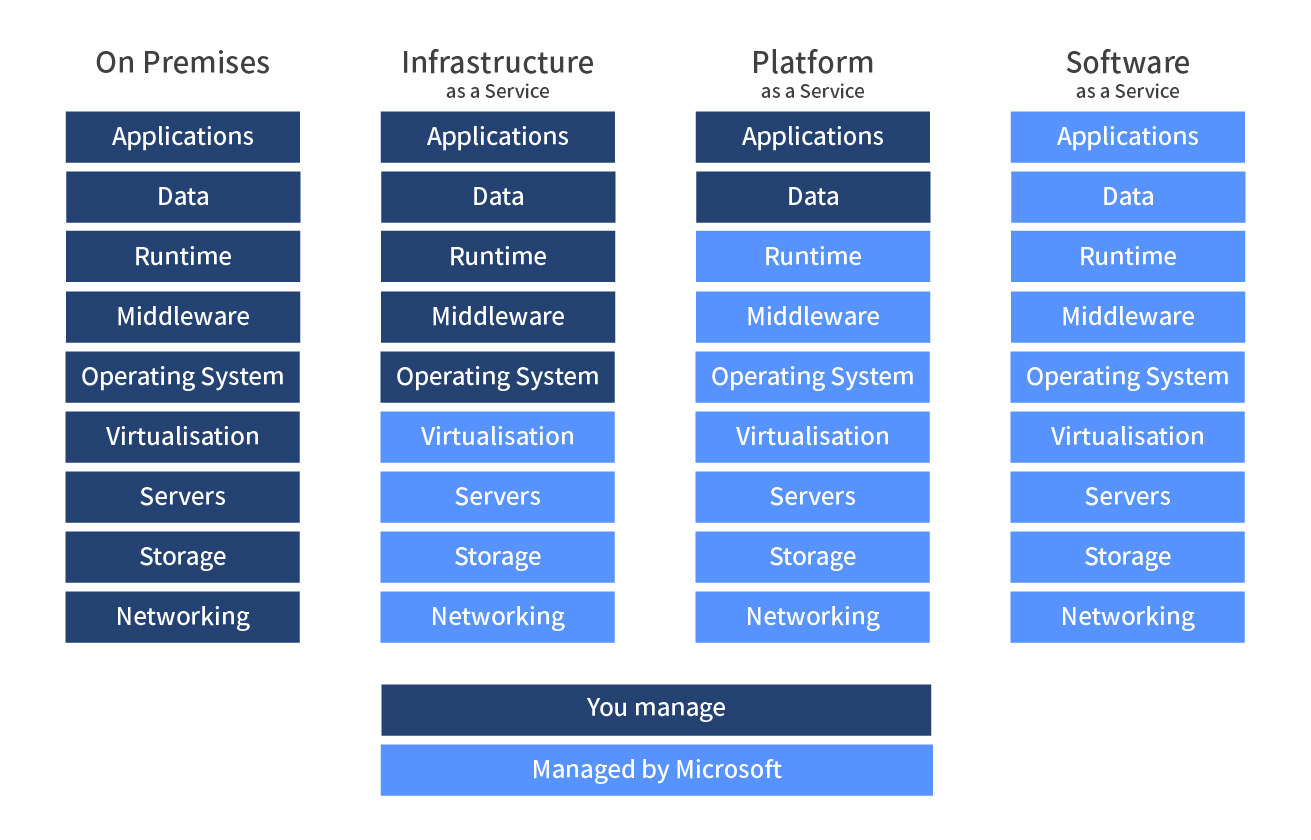Dataweavers only recommends deploying Sitecore on Microsoft Azure Platform as a Service (PaaS) and Microsoft Azure DevOps.
So, when it comes time to stand up a new Sitecore environment, migrate or upgrade an existing deployment, many customers ask why Dataweavers exclusively uses Azure PaaS as the platform to build on.
This is for a few reasons, but we see the three main benefits of Sitecore on Microsoft Azure PaaS being:
- The ability to utilize modern serverless technologies
- Scale quickly and cost effectively, manually and automatically
- CI & CD natively within the Microsoft technology realm
You can read more about deploying Sitecore on Azure PaaS on an earlier blog here.
Differentiating On-Prem, IaaS, PaaS & SaaS
If you’re visual person - this diagram outlines how Sitecore on Azure PaaS will look compared to IaaS, SaaS or on Premises, and the way in which management responsibilities lie within each. 
Definitions of Microsoft Terminology
All this terminology can be confusing, so we’ve put together a short dictionary to help organizations better understand what features of their stack are actually being managed by them or by Microsoft when choosing between On-Prem, IaaS, PaaS or SaaS.
Infrastructure as a Service
The capability of provisioning storage, networks, processing as well as other resources where the user can deploy and run software.
Platform as a Service
A cloud-computing model that allows user to develop, run, manage, and deploy applications within a cloud infrastructure, using supported technologies, without building and maintaining said infrastructure.
Software as a Service
Software as a service (SaaS) is a software distribution model in which a third-party provider hosts applications and makes them available to customers over the Internet.
On Premises
On-premises software ("on-prem") is installed and runs on computers on the premises of the organization using the software, rather than at a remote facility.
Application
A set of instructions that a computer or device uses to perform a specific task, such as word processing, accounting, or data management.
Data
A representation of concepts such as facts or instructions in a formalized manner, suitable for communication, interpretation or processing.
Runtime
The period of time when a program is running. It begins when a program is opened (or executed) and ends with the program is quit or closed.
Middleware
Middleware is computer software that provides services to software applications beyond those available from the operating system.
Operating System
Software that controls the allocation and usage of hardware resources such as memory, central processing unit (CPU) time, disk space, and peripheral devices. The operating system is the foundation on which programs are built.
Virtualization
The act of creating a virtual (rather than actual) version of something, including virtual computer hardware platforms, storage devices, and computer network resources.
Servers
A computer that provides shared resources, such as files or printers, to network users.
Storage
A device that can retain data for subsequent retrieval.
Networking
The Developer tools subcategory containing apps to help developers with networking aspects of building an app.
You can read more definitions from Microsoft here.
If you’re ready to migrate from an existing non-PaaS solution, check out how we helped Isuzu UTE and UnitingCare do just that.





